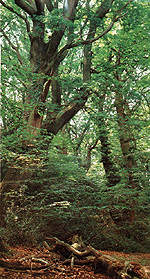|
|
 Assessing the FieldMost paintball fields are asymmetric, there is an advantage in playing one end against the other, and one side is also easier to attack/defend than the other. Consequently inspecting the field as carefully as possible before the game starts will always pay off, and you should continue to appraise the field as you are playing. When the two teams swap ends for the next game, think carefully about what happened in the previous game. Which flank did the enemy make the most progress on? Which were the critical pieces of cover which dictated the course of the game in their area? Picking a flank
The most important feature of a 'good' flank is a lack of really strong defensive positions for your opponent. A large barricade (enough for two or more people), right against the tape is a disaster for an attacker, because it will be almost impossible to shift them unless they are really incompetent. This is worse still if supported by another large piece of cover 5-10 metres towards the middle of the field. On the other hand if you have a piece like this on one of your flanks then you can reliably defend this side with relatively few people while you throw the weight of your team up the other side. If the other team is evenly distributed then you will have the advantage of numbers on this flank and should be able to roll them back. Another feature of a good flank to attack on is plenty of cover. This may seem to contradict the previous criterium, but you will need cover too. As an attacker you will be moving more, and if this involves a long run between sparse cover then it won't take long to be shot out. In addition if there is not much cover, the few barricades etc. that there are will already have defenders behind them. Finally to me an area with plenty of large trees for cover, but clear of scrub and bushes, is the ideal ground on which to engage because lots of undergrowth makes it difficult to see what is happening. Your principal advantage over your opponent is the use of tactics and close teamwork, so the plainer the situation, the easier it is to take advantage of it. Lack of visibility means that more is left to chance, which avours both sides equally and dilutes your tactical advantage. First Port of CallOnce you have decided which flank you are going to move down, make sure that you have decided exactly where you are going to run to at the very start of the game. This should be to a decent sized piece of cover, especially on a small field. It may well be advantageous to run quite a long way up the field to occupy a particularly decent spot before your opponent does, but this isn't the point in the game when you want to be doing anything too risky. From this safe spot, you can then watch the game take shape, and decide at leisure what your next move will be. Terrain FeaturesUsing coverWhen you're behind a piece of cover think about the level of protection it offers. Some bits of cover such as walls, barricades or trees form a solid barrier easily large enough to hide behind. This 'full' cover is the best, but there won't be much of it. Permeable cover has the problem that if the enemy are prepared to expend enough paint, eventually they will get you. You should also be aware of who is firing at you and adjust your position to reduce exposure from those directions. Partial cover is just as dangerous as permeable cover. It can form a useful temporary stopping point but don't stay there for long - retreat to better cover if necessary. Dense ShrubberyPersonally I'm not keen on dense shrubbery because what happens in it is very much a lottery, and I like to gamble as little as possible. (I also use a pump, which is at a disadvantage compared to a semi in close quarters). Most of the action is very confused and takes place at very short range. When in this terrain, sound becomes very important, because winning is dependent on surprising your opponent. Move in a squatting position, with your gun held ready to fire against your shoulder. This way you can transfer weight extremely slowly from one foot to the other as you move forwards. Check when you put each foot down that there are no leaves to rustle or twigs to snap, and pause regularly to listen for signs of the enemy. TreesA good sized tree is excellent cover because it is always easier to shoot round the side of something than over the top. Because of the tree's cylindrical shape, however, you need to watch your angles. PalletsA lot of paintball sites use wooden pallets, which seem good cover, but the slots are surprisingly large. If someone is persistent they will probably get you in well under a minute. Lie down to reduce the number of slots you are visible through, and try not to stay too long. StreamsThese are a major obstacle even if they are quite small because the banks tend to be slippery and sloping. Crossing one while being shot at is definitely something to be avoided. If the stream runs diagonally down the field, then cross it at the friendly end and work along it. Getting on the far side of streams is also something to prioritise during the initial rush to positions. BrackenBracken is good cover as long as there is a reasonable depth of it between you and your opponent. However, be careful because if they are prepared to expend enough paint, occasional shots will penetrate surprisingly deeply. Bracken is also one of the few types of cover where it is possible to move undetected. | ||

©2002. All rights reserved.
| |||

 As
mentioned in
As
mentioned in